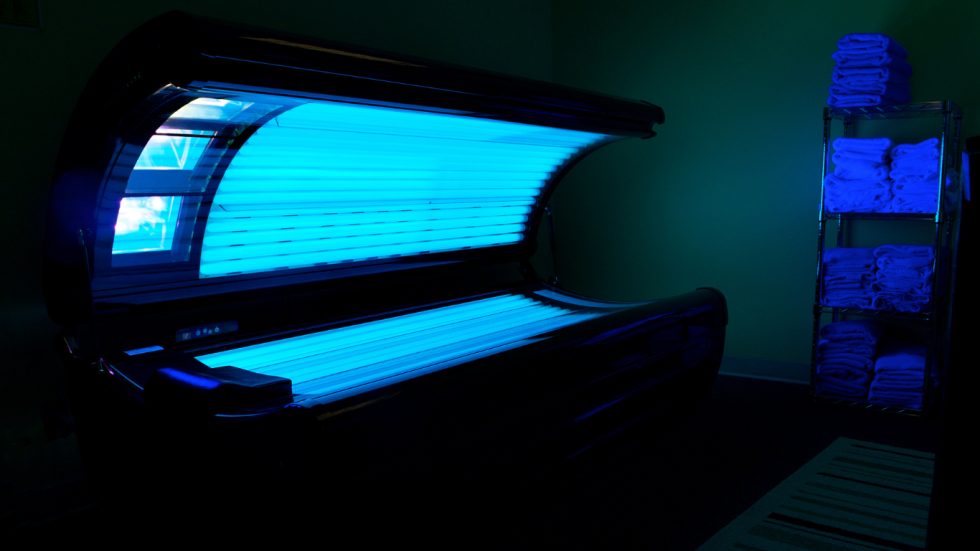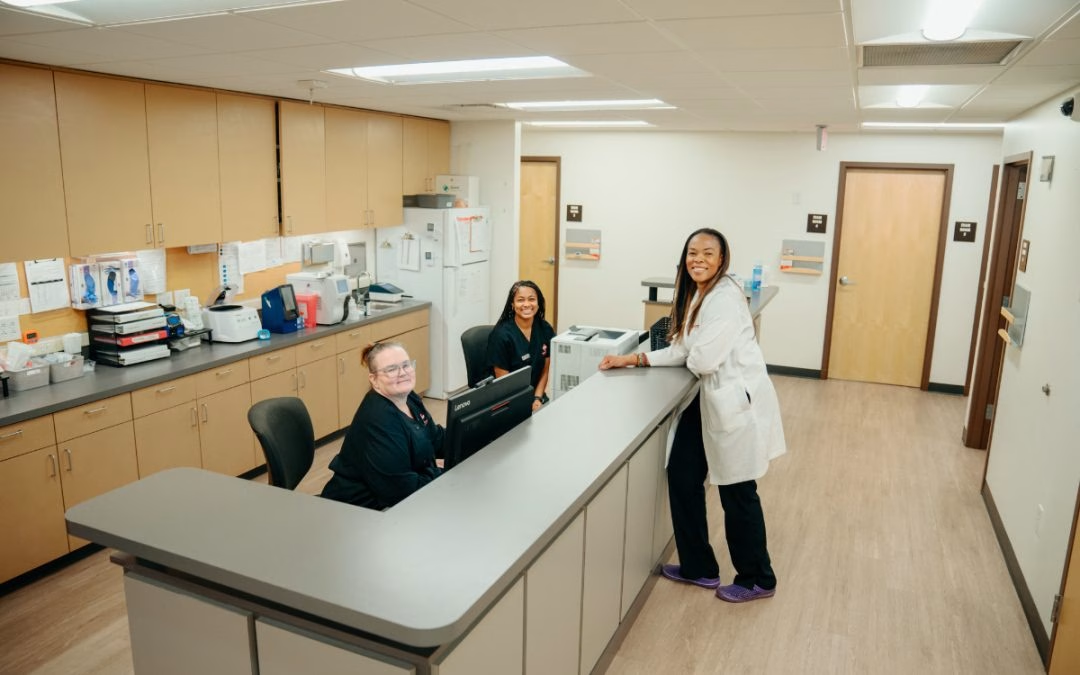
Can Tanning Beds Help My Psoriasis?
The daffodils are pushing up through the soil and will soon be showing off their delicate white and yellow blooms meaning the warmer days to come will make for pleasant long walks along Chattanooga’s Riverwalk. If you suffer from psoriasis, you might be among those who have found that the long days of summer offer you a measure of relief from the flare-ups that can make your life miserable.
What is Psoriasis?
Psoriasis is a chronic autoimmune disease that causes inflammation and patches of skin cells to reproduce faster than normal. Plaque psoriasis is the most usual form of psoriasis, but it can turn into several different types including Inverse, Guttate, Erythrodermic, or Pustular.
Plaque Psoriasis is recognized by patches of red on the body that have thicker, scale-like skin on top of them. The scales may be white or silvery in appearance. Psoriasis is often associated with inflammation throughout the entire body which can lead to other conditions such as Type 2 diabetes, heart disease, anxiety, and depression.
Who is at Risk for Psoriasis?
The most common risk factors for psoriasis are:
- Genetics
- Smoking
- Obesity
- Alcohol use
- Stress
- Certain medications
- Infections
Typically, skin cells are replaced by the body every 28 days, however in plaque psoriasis, they are replenished every 4 days. This is what causes the buildup of thicker scales. Aside from the unusual look, psoriasis flares are often painful leading those affected to try and find any relief they can.
Does Light Help Psoriasis?
Light therapy, called phototherapy, can be quite beneficial for psoriasis as it helps to control scaling and inflammation, but not all forms of light are beneficial, and none of it is advisable for extended periods.
The longer, warmer days of summer move us outdoors as we enjoy the increased sunshine and activities such as barbeques and sports games as well as leisure activities. This increased exposure to sunlight can help alleviate the effects of psoriasis for people to varying degrees. Sunlight is composed of ultraviolet light (UV) which is a form of radiation. It is primarily composed of light on the ‘A’ spectrum (UVA) which penetrates the skin deeply. Brief exposure to UVA light can help treat psoriasis but it is also the spectrum most associated with skin cancers. Light on the ’B’ spectrum (UVB) accounts for 5% of natural sunlight. UVA light penetrates the skin more deeply than UVB rays. It is the UVB spectrum that is most used by doctors in treating plaque psoriasis as it slows the growth of affected skin cells, but exposure is limited to noticeably short periods.
Can a Tanning Bed Help Psoriasis?
Some psoriasis sufferers turn to tanning beds to help provide extra UV light for their skin during the winter months or to supplement natural sunlight year-round. Aside from the short-term tan you get from a tanning bed, you can be setting yourself up for serious health problems down the road.
The light in tanning beds is quite close to that of natural sunlight in the percentages of both UVA and UVB light. This makes tanning beds or lights of no significant increased value when compared to natural sunlight. The U.S. Food and Drug Administration (FDA) requires warning labels on all indoor tanning equipment and in 2014 reclassified the bulbs from Class 1 (low risk) to Class II (moderate risk). Dermatologists and healthcare workers discourage UVA exposure. Tanning beds possess the same drawbacks as natural sunlight, but their risk can increase due to the length of exposure and potential whole-body exposure, especially when coupled with tanning skin creams. The light from sun tanning beds dehydrates the skin which causes UV rays to be reflected away from it. Sun tanning lotions applied before tanning keep the skin hydrated and allow UV rays to penetrate with increased efficiency. This increases the absorption of the UV spectrums over what would naturally be absorbed.
Tanning beds are sometimes advertised as a valuable tool for increasing the production of Vitamin D, however tanning beds mostly emit UVA light. It is only UVB light that causes the production of Vitamin D. So, instead of tanning, it is best to take supplements or eat Vitamin D rich foods including mushrooms, tuna, eggs, fortified cereals and cheeses, and oily fish such as sardines, swordfish, and mackerel.
Risks associated with Tanning Bed Use
- Indoor tanning can increase your risk of developing the two most common types of skin cancer, squamous cell carcinoma by 58% and basal cell carcinoma by 24%.
- Using tanning beds before age 20 can increase your chances of developing melanoma by 47% with the risk increasing after each additional use according to the American Academy of Dermatologists.
- Tanning, inside or outside, ages your skin more quickly as wrinkles, age spots, stretch marks become more visible, and loss of skin firmness can appear prematurely.
- Eye damage including cataracts, ocular melanoma, and photokeratitis (snow blindness).
- Immune suppression
- Women under 30 years old who tan indoors are six times more likely to develop melanoma.
- Tanning can cause skin to become leathery- an issue those who do not tan do not have.
- Tanning bed injuries send many people per year to the emergency room with burns, loss of consciousness, and eye injuries.
- Psoriasis can flare worse after a tanning burn.
- Becoming addicted to tanning
The World Health Organization International Agency for Research on Cancer has placed tanning beds in the same category of cancer-causing agents as cigarettes and plutonium.
Phototherapy for Psoriasis
No one wants to deal with psoriasis, and finding help dealing with it can be a challenge. While there is no cure for psoriasis, there are many treatments that can help you manage it including injections, pills, topical creams and ointments, and phototherapy.
Phototherapy as a treatment for psoriasis can take several forms:
Sunlight
Brief daily exposure can help, but intense sun exposure can damage the skin and worsen psoriasis symptoms.
Artificial UVA (PUVA)
This treatment relies on the use of psoralens which are light-sensitizing agents that can be topical, mixed in bath water, or given orally. Patients must carefully monitor sunlight exposure and limit it according to their doctors’ orders. This form of treatment is best for stable plaque psoriasis, guttate psoriasis, and psoriasis of the hands and feet, but may be contraindicated by certain medications needed to treat other issues. This treatment, also known as photochemotherapy, is used in more severe cases. Short-term side effects can include nausea, rash, blistering, burning, itching, and sensitivity to sunlight. Long-term effects include dry and wrinkled skin, freckles, and an increased risk of skin cancer.
Artificial UVB Light
Phototherapy
This light therapy is often combined with topical treatments to treat mild to moderate psoriasis. It can be administered through small hand-held light units or full-body units that emit only UVB light. Some units use UV bulbs, others use LED bulbs. These units target affected skin only and take only seconds in a physician’s office. The reduction of inflammation in the targeted areas can result in remission. Light units can be purchased for home use, however, buying them requires a prescription from a doctor, and a regimented schedule must be followed. Short-term side effects can include rash, itchy and dry skin.
Narrow Band Therapy
This may work better than phototherapy and takes fewer visits, though it may cause more severe and longer-lasting burns.
Excimer Laser
This is used for mild to moderate localized psoriasis plaques and helps control scaling and inflammation. The high-intensity beam is highly effective for the treatment of the scalp. Side effects can include rash and blistering.
Tanning beds should not be used casually, however, on rare occasions and only after carefully weighing a person’s unique case of psoriasis, a doctor may invoke the use of one. Balance must be carefully weighed between UV exposure and the hazards of it.
Remaining in close consultation with your doctor is strongly advised to protect your health both now and in the future.
While we don’t treat psoriasis, we can evaluate and treat minor dermatological issues that may arise as spring begins. Visit AFC Urgent Care Chattanooga 7 days a week with no appointment necessary.


